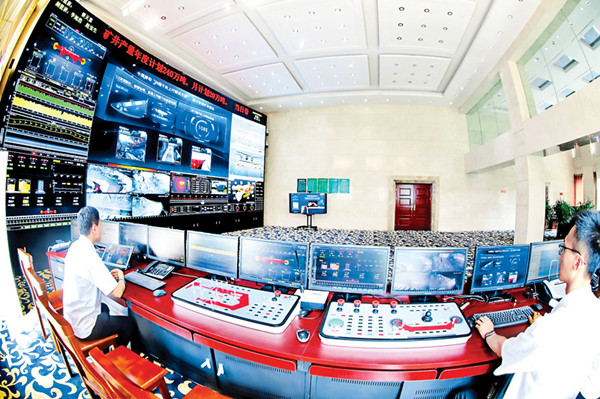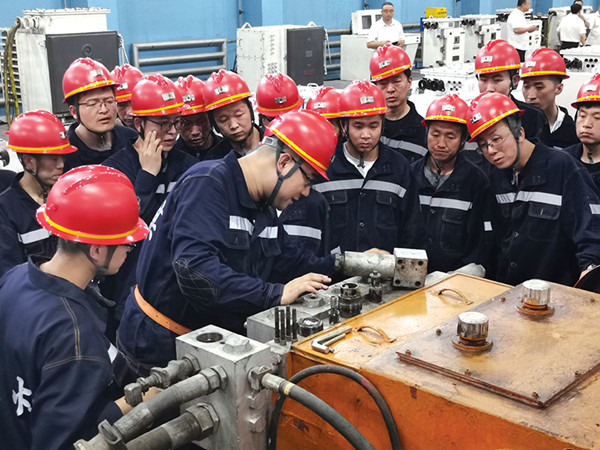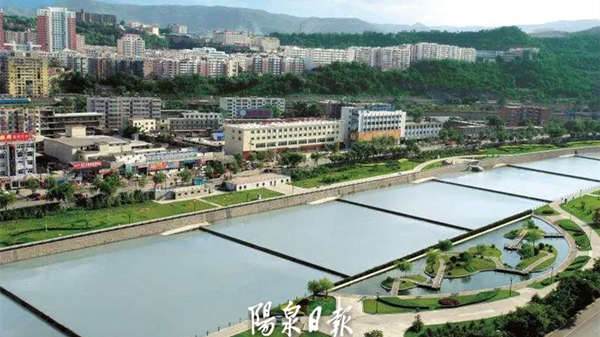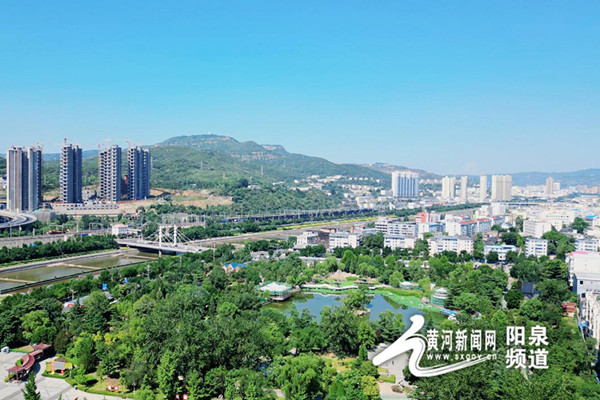Yangquan city pushes its green, low-carbon transformation

5G technology improves intelligent coal mining in Yangquan. [Photo/Yangquan Evening News]
Yangquan city in North China's Shanxi province has promoted the green and low-carbon transformation of its economy, industrial system, and energy supply system in recent years by exploring innovative development paths involving new materials, coal and the electricity sectors.
As a new materials industry base supported by Shanxi, Yangquan has taken on the carbon-based new materials industry in order to advance the high-end, energy-saving and eco-friendly development of the sector.
Yangquan has introduced projects in the fields of carbon-based new materials, new biodegradable materials, new graphene materials and diamond production from coalbed methane, as well as cooperated with related companies.
The city plans to connect the entire supply chain, from raw coal production to the fashion industry. It plans to help develop the biggest manufacturer of biodegradable raw materials and terminal plastic products in North China and a single-layer graphene oxide raw materials production line with annual production capacity of 1,000 metric tons, as well as improve the utilization efficiency of its coalbed methane resources.
Also, as an important coal production base, Yangquan remains committed to accelerating green and intelligent coal mining and advancing the construction of advanced production capacity.

Miners of Huayang Group learn vocational skills. [Photo/Yangquan Daily]
At the start of the year, 24 production coal mines in Yangquan passed a review for super safe and efficient mines, and the city's proportion of advanced coal production capacity has increased to an estimated 83.57 percent.
What's more, Huayang New Material Technology Group, a local Fortune Global 500 enterprise, has obtained qualifications to independently build 5G networks for coal mines. It plans to work with scientific research institutions and universities to explore terminal services, smart mining automation systems, the internet of things and augmented reality remote diagnosis, accumulating a knowledge database for intelligent mining operation across China.
As for the new energy sector, the city has promoted the construction of new energy projects to help reach its goal of peak carbon emissions and carbon neutrality. Currently, the city's new energy power stations have an installed capacity of 1.68 million kilowatts, accounting for 29.33 percent of the city's total installed power generation capacity.





